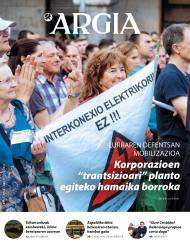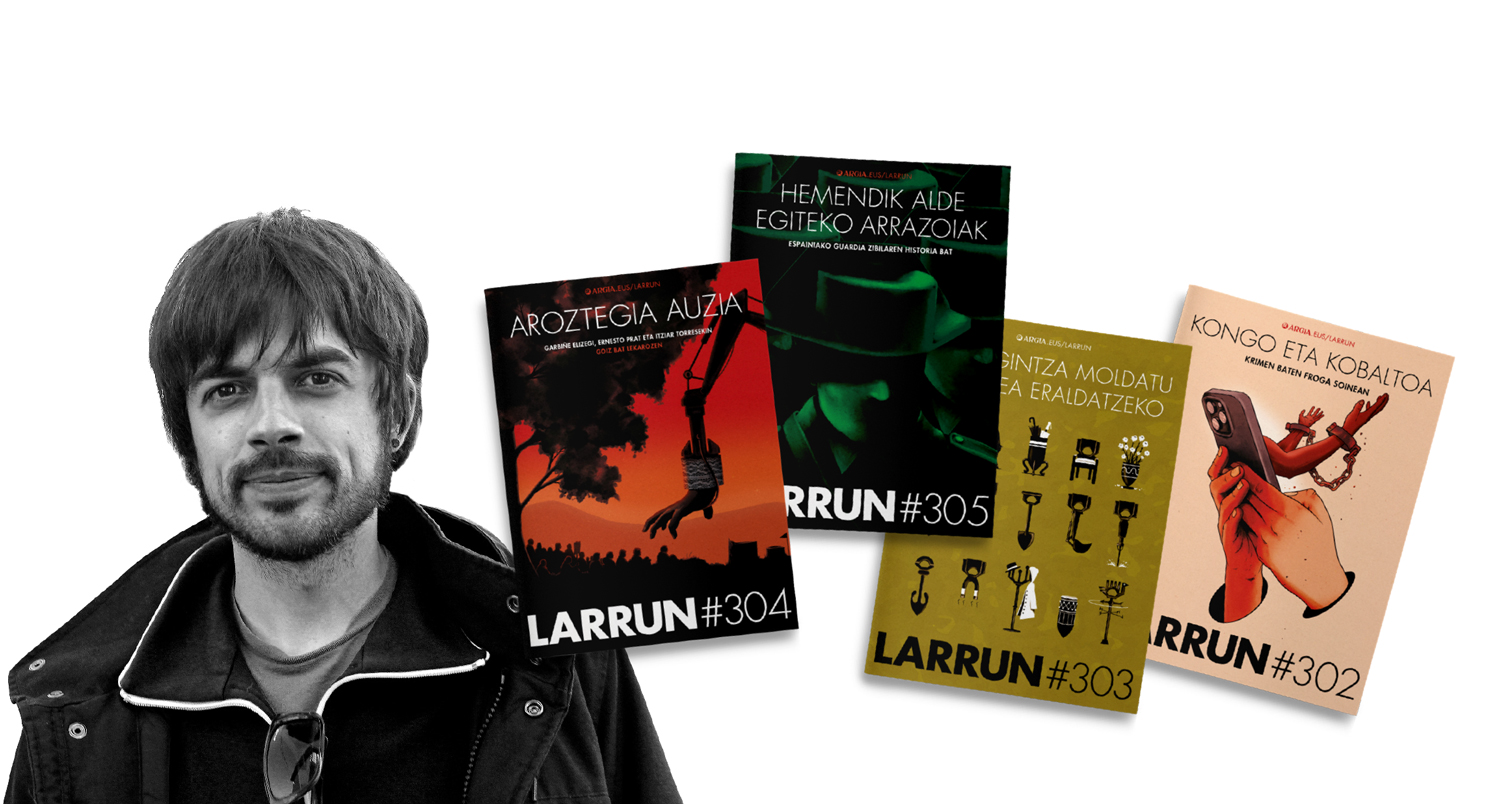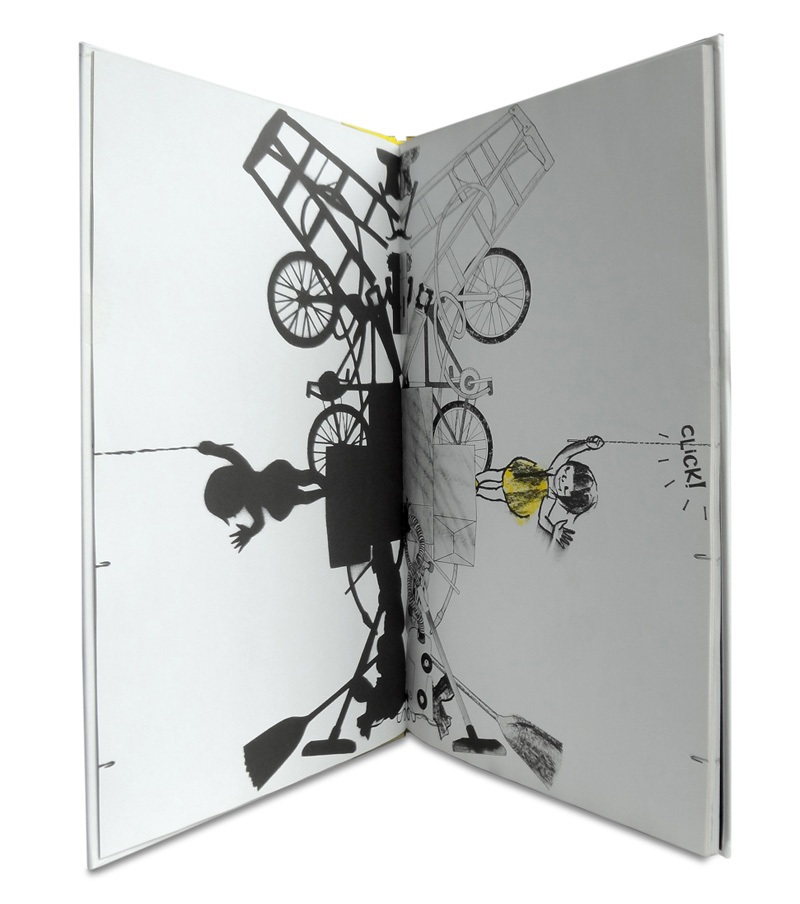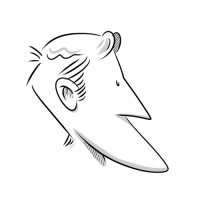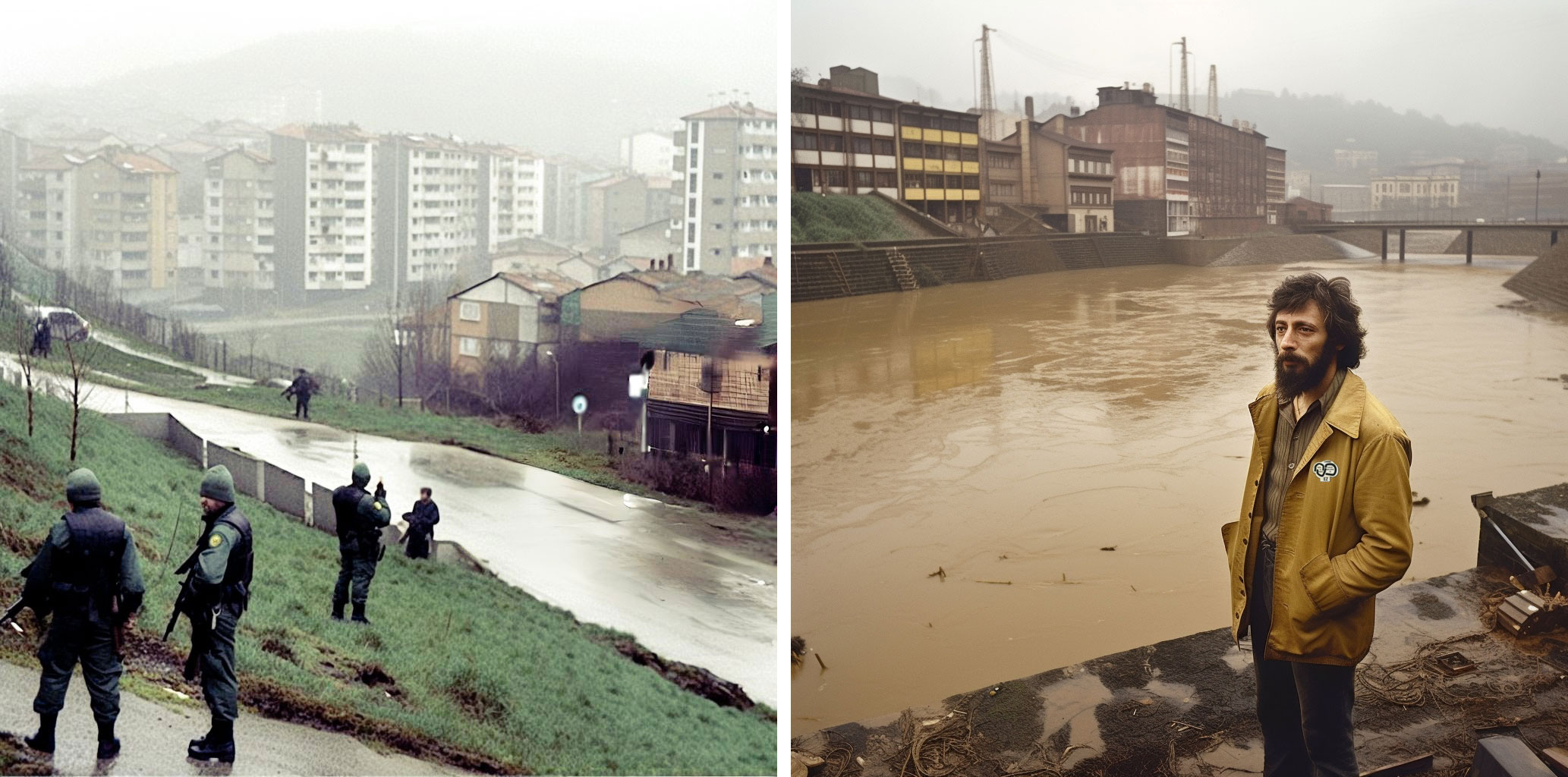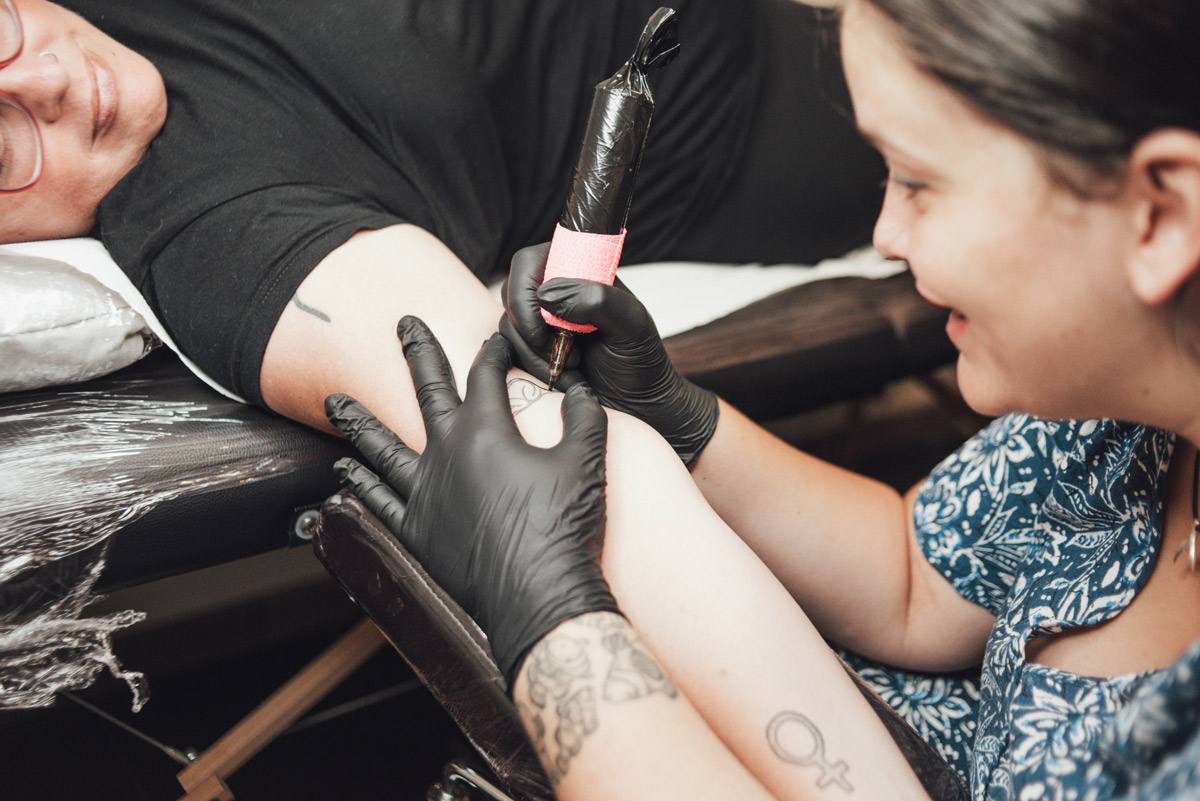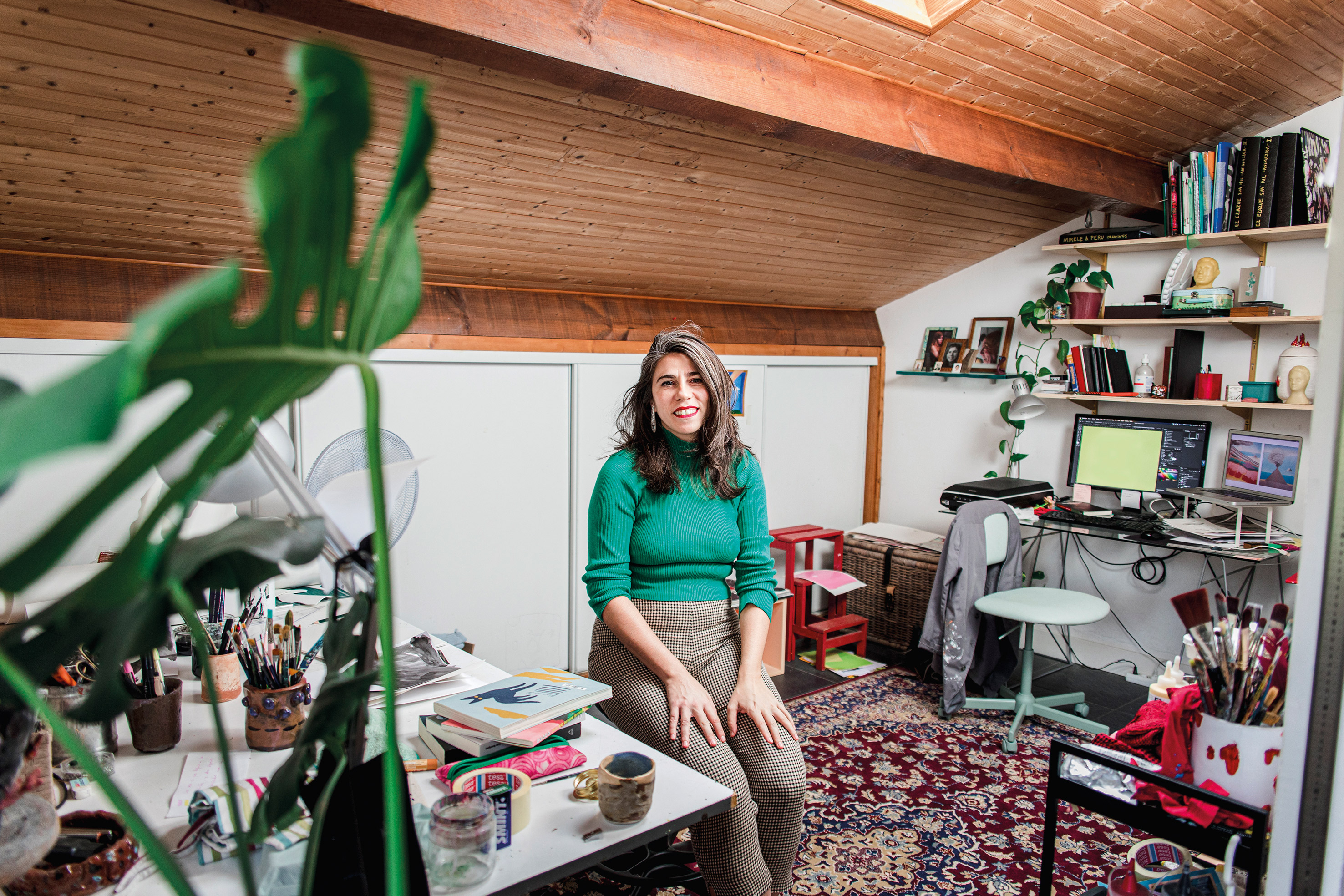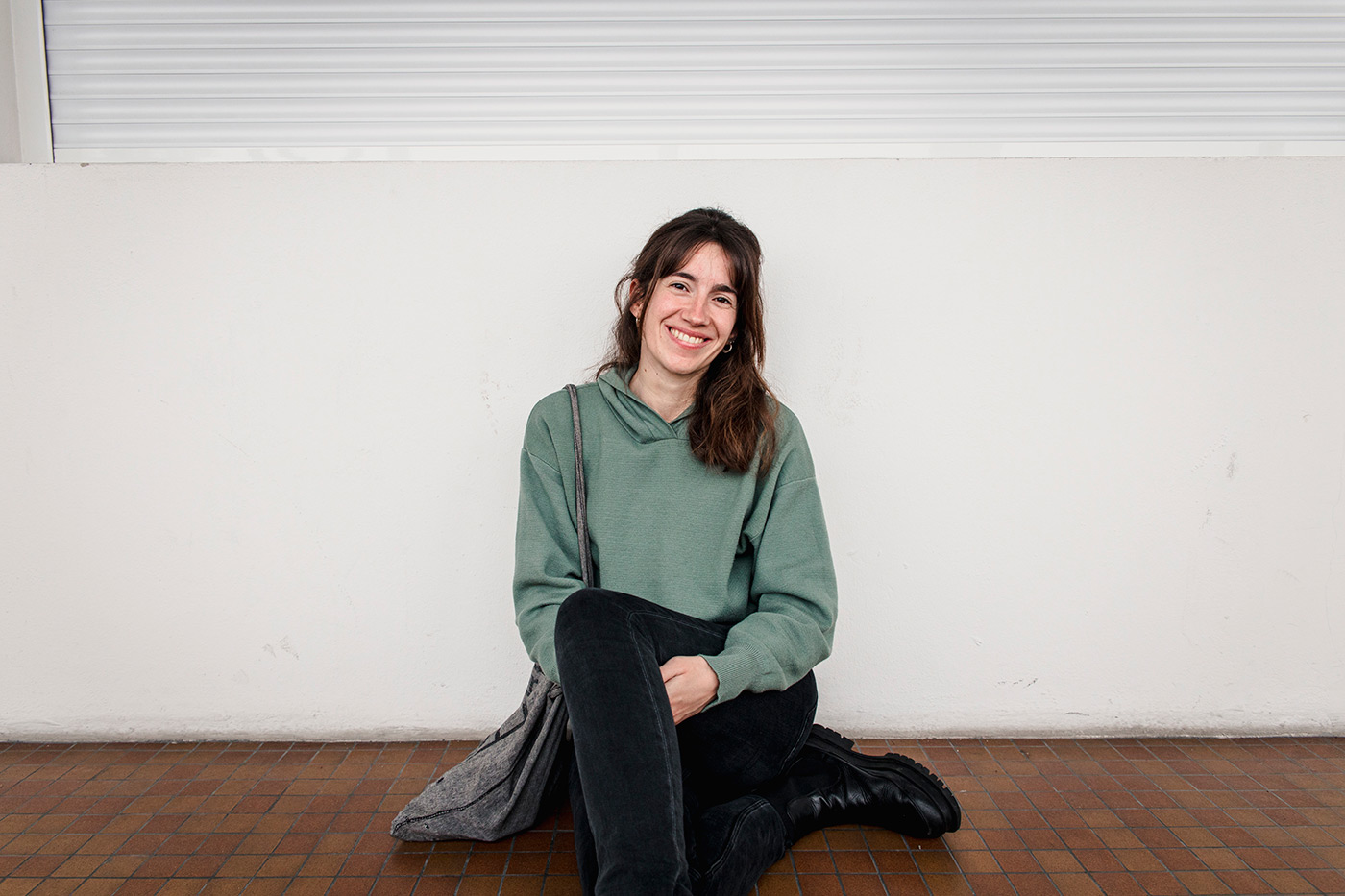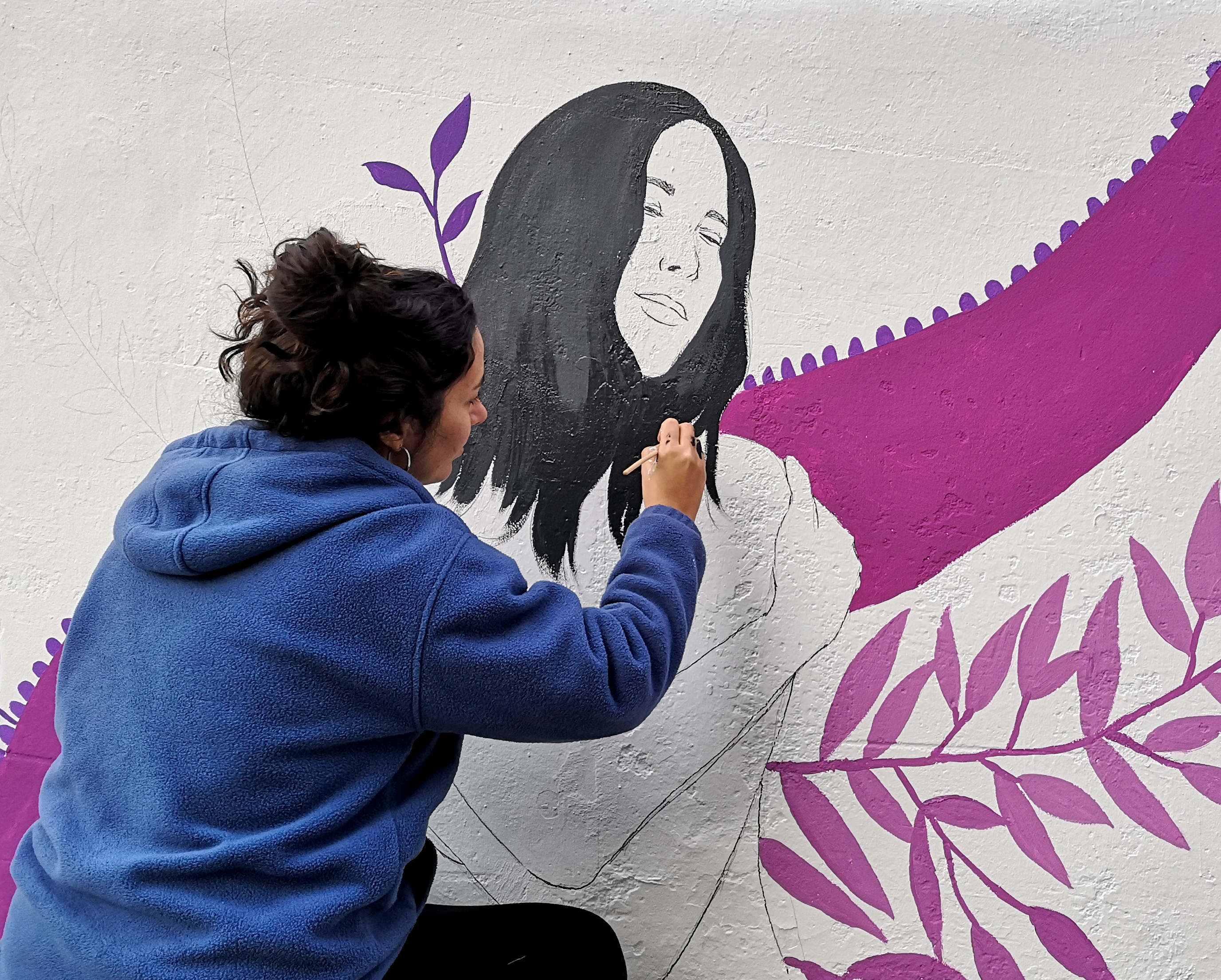"Artificial Intelligence is a tool of the future, but its essence is to steal creations from the past"
- I knew the work of the creators Elisabeth at the bookstore congress held in March in Pamplona, passionately defending creative artificial intelligence. Soon after we stayed to interview before going to the Bologna Book Fair and Colombia. I recognize that I imagined the work of the illustrators much quieter and thought that creative artificial intelligence is a fun toy. What is living in ignorance!

Elisabeth Pérez Fernández. Barakaldo 1988
Illustrator. After graduating from Fine Arts from the UPV, he studied and worked in Italy for seven years. Founder of Bonito Editorial. He was president of the Association of Basque Illustrators for four years. He is currently Irudi, director of the International Professional Meeting and FADIP at state level, vice-president of the Federation of Professional Illustrator Associations and Fine Arts Educator of Bilbao. On Uribarri 28 street in Bilbao has a library gallery called Segundo.
Why illustrator?
I come from a family of workers and although there is no “artist”, my father has always wanted to paint, even if he is a professor, and my mother is a lawyer, but very creative. I've learned illustration by my love of stories. When I knew I could do this, at the end of my career, I began to specialize.
How and how did it go to Italy? I made an Erasmus in Florence last year
and fell in love with the city. There I learned an editorial graphic design and I met Bruno Munari's work on the object of the book. I started seeing the book as more than just a product to sell immediately. I came back here six years ago, but I keep in touch with professionals and friends there and I work a lot at Itail.
You
are director and co-founder of the Irudi association. Why and why the Image? This project emerged in 2017 from the Association of Illustrators of the Basque Country. When I lived in Italy, I was offered to be president of the illustrator association. I was in that position for four years, and then we started Irudi. I saw that there was little relationship with other professionals and external trends. I've been at many fairs and I knew the diversity there is in the world, so coming here I thought it would be good to do a kind of meeting to show what we do here and our culture, and at the same time to know what is done outside. It is a professional meeting point where books are not sold. Our goal is to speak and reflect. We know in what precarious situation many creators live in and, at least, who cannot travel abroad may have the opportunity to know something that is done outside through Irudi.
Annual image at the Artium museum. This year the eighth edition will be held from 24 to 26 October. There will be a Latin American country, a North European country and a third Mediterranean country.
.jpg)
How was Bonito Editorial born? The work processes of illustrators, writers and translators
are slow. We need time to do things right and the book sector wants to go faster and faster. The length of books in bookstores is decreasing. His life is now very short and that is a tragedy. In addition, I saw that in some cases publishers set limits to make the book you want. All of this made me think that maybe I had to make my books. After working on an entrepreneurship program I formed my own seal, following the path of other authors (Planeta Tangerina, Katsumi Komagata..).
One of the best Spanish editors, Media Vaca, is an illustrator. I saw that projects carried out with a great deal were generally creative and not businessmen.
We creators have always been proud of self-publishing. This movement is widespread and respected among creators, as it allows you to consider format, materials, printing and binding selection as a book or part of the fanzine creative process.
Today, on the contrary, it has a bad reputation, because to some extent it is confused with self-publishing and because many companies have emerged that publish any book in exchange for money and quickly. Unillustrated literature is the one that happens most: if nobody posts you, you pay one of them and you have your book in hand. But one thing has to be distinguished from another. You don't have to mix everything.
"All my books have the same price: 25 euros. I always try that people choose for the book and not for the price”
I founded Bonito Editorial to make my books, but the second year I decided to publish the works of other authors. I work with several publishers (Erein, Igela, Middle Cow, Red Veleta...), but I do special jobs myself. Saturnin, for example, is a book that has cost me eight years. I have control of the book making process and I can also get more time in the market because I am the editor and I am not in a hurry to get out of the shops.
All my books have the same price: 25 euros. I always try to get people to choose the book and not the price. The processes I do in the printing press are always done here in the Basque Country, because I like to see everything and for me the concept Km 0 is very important, also in the production of books.
Pretty, I haven't just published children's books. We also work on poetry and illustrated essay. I like to cook books slowly.
How many books have you
made? I have twelve divisions, but now another two will come out. Half of them are the total work of me, stories and two poetry.
You are an educator
at the Museum of Fine Arts in Bilbao. What do you do there? I started doing family programs in 2012. Furthermore, for two years I have been working with two groups of women at risk of social exclusion. It's very interesting. On Wednesdays we met to analyze the works of the museum and create pieces. These women do not have time for them and, in addition to what they learn, they seek their own ways to express what they have inside. Very nice things come out. They're much more grateful than many other audiences.
How is the profession of illustrators here? The sector is gradually improving, partly due to the work carried out by the partnership. Excellent management team. We are about 170 partners, the Basque majority and on many occasions we are told that the Basque illustrator quarry is very well seen. The image has also contributed to this. But not everything is in our hands. They should help more from the institutions. Ours is a regular job that is a major obstacle to being able
to dedicate 100%. Quotes, social security -- everything is very difficult for us.
Is precariousness widespread? Yes, all free-lance people know very well what regular work is. That is why we are all trying to have at least one fixed job, albeit simple, to pay for the self-employed and the house. I, for example, have more fixed expenditure than monthly revenue, and I always have to go juggling. We combine small orders with books. For illustrators making books is the nicest thing, but you usually pay the worst. The most prestigious, but the least money gives us. So we're working
on 1,000 sites as possible.
Now you have a new rival: creative
artificial intelligence. Are we taking this fast? Yes. Because they want it to be. What makes us most angry is that all of this comes from private companies that are enriching at the expense of their creators. AA affects all generating sectors. Everywhere we talk about AA as a fashion, and institutions, city councils -- they want to get into that fashion. This superficial information and agility harm us. Press a button and create a work out of nothing, where does it come from? It comes from abuse. These software companies steal material online. Extractive mining. They convert the captured images into data for later sale. Furthermore, the copyright of these alleged new content does not belong to the user but to the software. Lawyers discuss who is the legal author today. They say it's an original computer, but what is it? The one used to train the software or the user installing it?
ARTIFICIAL INTELLIGENCE
"Pressing a button and creating a work from nothing comes from: It comes from abuse. These software companies steal material online. mining equipment
You have to tell everybody that, as long as this is not regulated, they have to ask the creators if we want to participate in this machine training, paying for our jobs and mentioning our name. This “work” thus accomplished comes from the mixing of other works. Our requirements are not being met and meanwhile we see how these software are being used in different municipalities, fairs and institutions as if something was super fun. As the mouth is filled with culture, creators are leaving without protection.
We've all had to adapt to digitalization, all right, but if that's where the difference is to violate rights and open doors to intrusion.
.jpg)
What do the laws say? There is no law, only advice. A couple of months ago, from the Ministry of Culture, they drew a guide to good AI practices with very good intentions, but with very bad writing to put it in some way. In the end it was said that partial but not complete use can
be made. How do you understand this? In times of piracy, it wasn't said that you can hack half of what you consume and half, for example.
Differentiate between the general AA generator and the AA generator. AA may be in programs like Photoshop or InDesign, but it's not a problem. These are the tools: you put your work in and you do it as you want. The AA creator is something else, because the contents that are not yours you take them without your permission and use them as you want. For example, Midjourney for the image or GPT Chat for texts feed on burglaries. We at FADIP have talked to representatives of the Ministry of Culture and are now drafting a new text.
"With Photoshop or InDesign you do it as you like. With the creator AA, receive content not yours without authorization and use it as you wish. They feed on GPT Chat logs for midjourney or texts"
Do creators have to be teachers? Besides being a professor, we seem to have to be
an AA Police, and it's not nice. We often talk to institutions, even creators. At European level we work with other illustrator associations and, even if it is slow, we are achieving something.
We're also doing a lot of peer work. Sometimes we find it hard to explain that AA is not a tool because a tool does not violate rights. A hammer or a digital editing program are tools, but not this. On the other hand, some authors believe it is something to play with no bad intention.
The authors know how to defend it. There are ways to avoid stealing your work, like the varnishes that can be put into the images, but that's a job and an extra expense for us.
In public competitions, for example, what would be the best? Do not use the AA generator as a necessary condition. For this purpose, an affidavit may be requested in the manner in which it is requested to swear that no other work
has been plagiarized. Participants shall state that no software violating copyright has been used. The problem is twofold: many of those who make these kinds of calls know nothing about it, while others are interested in having work in their calls.
Another way to protect artists is to request dossiers for competitions and not finished posters. In this way, the work is paid with dignity and is chosen from images created as a model, without promoting free work.
* * * * * * *
LAST WORD
Copy of the copy “We live in capitalism and have introduced AA to get results and benefits quickly. What will
be achieved with the thrust of creators? The use of online mining software increases the presence of blending material on the Internet. Increasingly scarce backups. This can be the end of cultural creation. The creator AA
says it is an instrument of the future, but its essence is to steal the creations of the past. It is neither a tool nor a future. Experimentation is the future, but to protect these processes and ensure the necessary time, we must remain creators."
OFF THE RECORD
The book is one of the few things that has not undergone substantial changes in history. Now books want to
be made and sold too quickly, and that's not good. The book is usually short in stores and those who are not sold take it to a store or destroy it. Before they were burned, now you make paper pasta. This expenditure is counted from the beginning of the process. If there were more time in the shops, they would be destroyed less, but there is huge production. For one thing, it's good that the more voices we have, but with this system, we're creatives who lose. After a great job, in a few months you have to sell a lot to collect some money."









